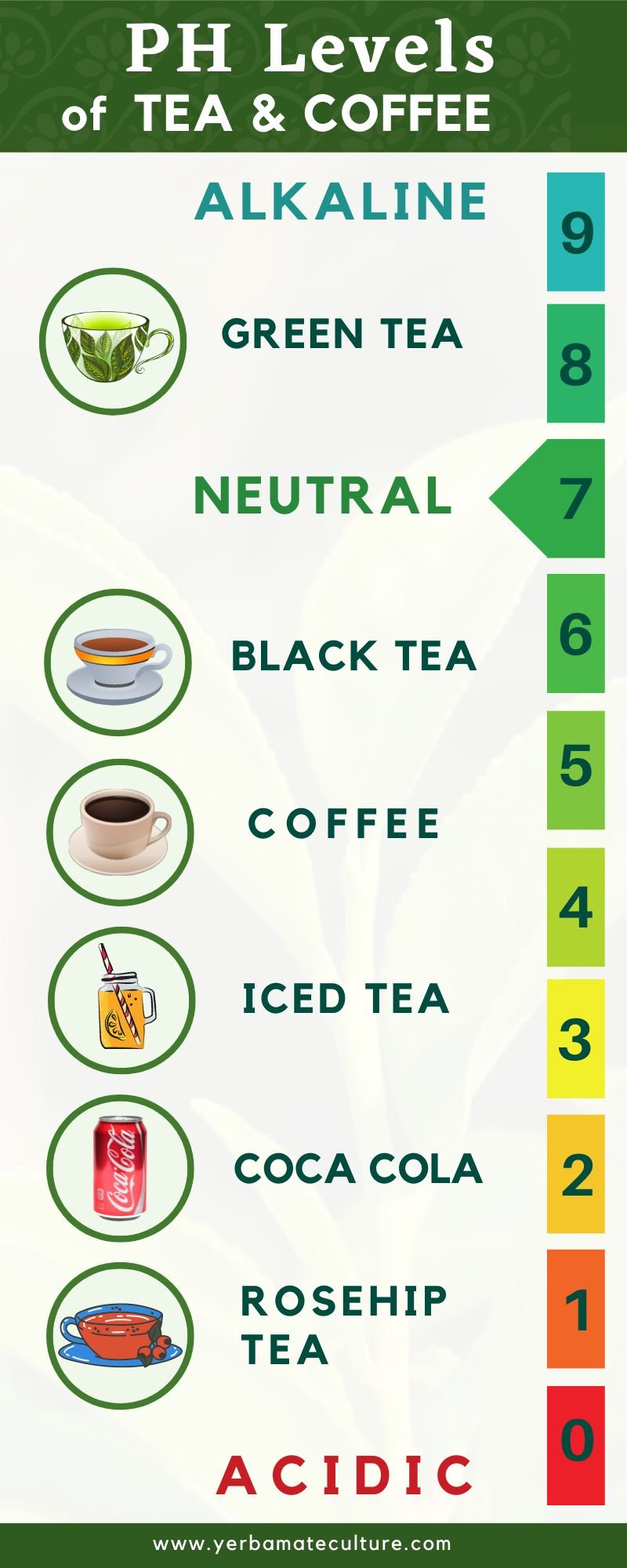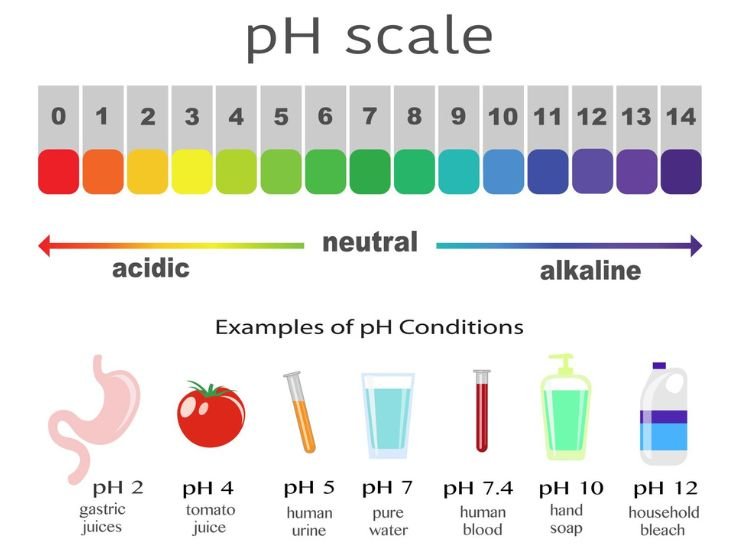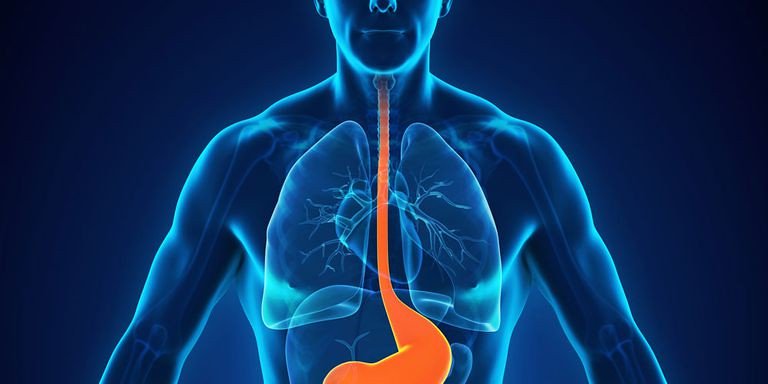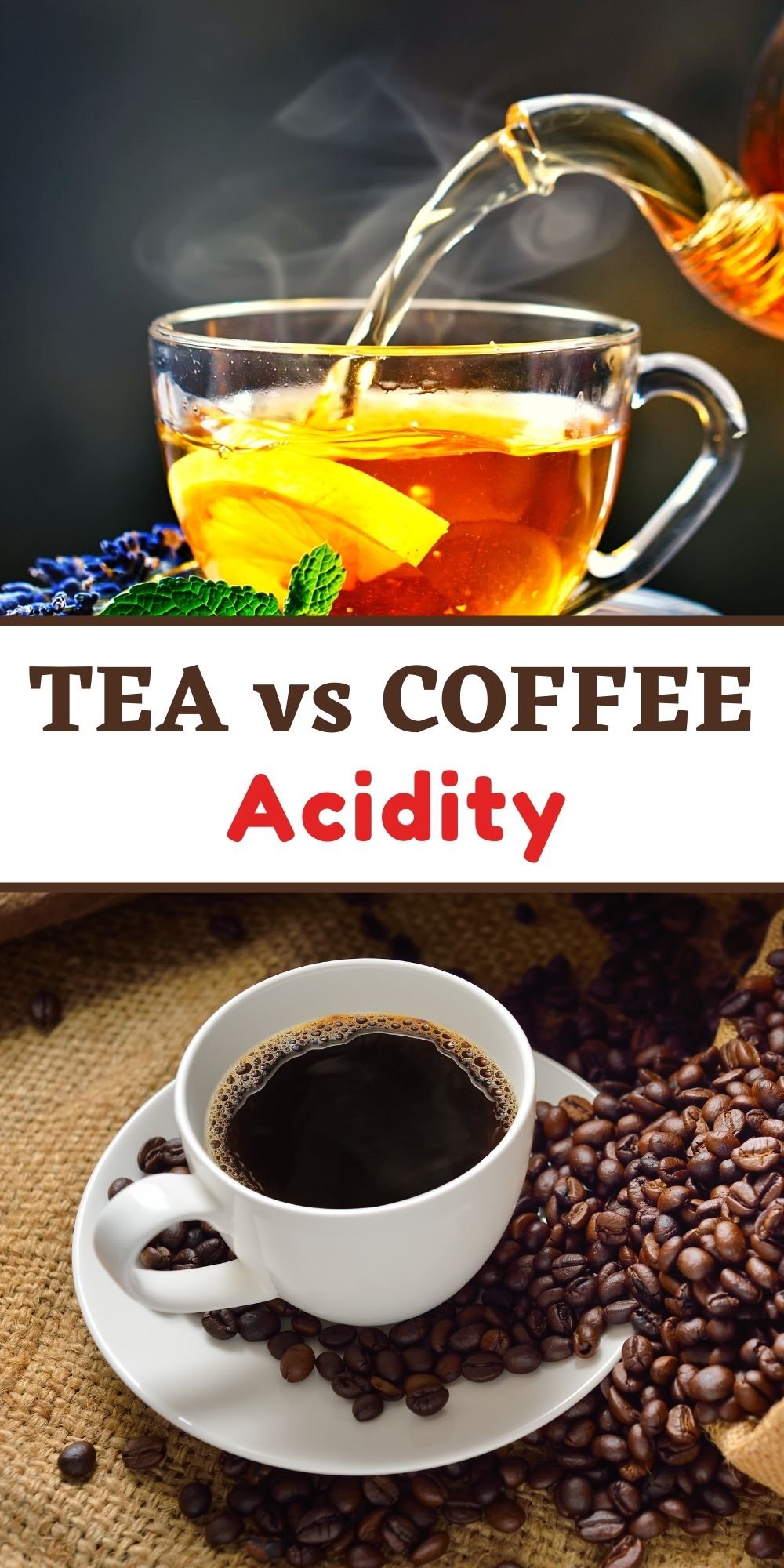You might be rethinking your relationship with your favorite beverage when trying to reduce acidity in your diet.
Most people don’t think about acidity levels in foods and beverages until they experience painful reflux or irritable bowel syndrome (IBS). Others are concerned about what acid is doing to their teeth.
So should you choose coffee or tea if you’re trying to cut down on acidity?
The quick answer is that coffee is more acidic than most teas. But some teas are more acidic than coffee.
In this guide, I will explain everything you need to know about the acidity levels of tea versus coffee.
If you just want to quickly compare the acidity of coffee and different types of teas, take a look at the infographic below:

Is Tea Acidic?
It helps to first establish a baseline for acidity when comparing tea to other beverages.
Acidity is measured against something called the pH scale which ranges from pH 0 to pH 14. On the pH scale, a ranking of pH 7 is considered neutral. Anything under pH 4 is considered highly acidic.

In short, most teas are slightly acidic, while green tea is an exception as it is alkaline.
Teas have acidity levels ranging from pH 3 to pH 9 — so there is a lot of variation between different types of teas. Acidity levels can change quite a bit based on what kind of tea leaves or herbal ingredients you are using and how you brew your tea.
For example, black teas are mildly acidic. Expect an average cup of black tea to have an acidity level ranging from pH 5 to pH 5.5.
Oolong teas hover between pH 5.9 and pH 8.5 depending on the oxidation level.
Green tea has surprisingly low acidity. Most brands of green tea and white tea are actually alkaline with pH levels between neutral pH 7 and pH 9.
Finally, herbal teas can fall anywhere from pH 3 to pH 7 while most rank between 6.5 and 7 on the pH scale.
Chamomile and mint tea both fall right around neutral pH of 7. With acidity levels hovering around pH 3 and even below, rosehip, lemon, and blackberry herbal teas are some of the worst if you’re going for low acidity.
To make things even more complicated, teas can contain different types of acids including tannic acid and citric acid. The type of acid that each tea contains affects its pH level, taste, and how it affects your stomach.
So can you assess tea’s acidity just by tasting it?
Yes, you can actually learn to estimate acidity by tasting a tea. The truth is that most of us don’t have science labs at home — that’s why it’s helpful to know this trick for how to guess the acidity level of tea!
Sour and sweet teas tend to be more acidic than “flat” teas. According to a Turkish study on pH and acidity of popular teas, any tea from a fruit tree is likely to be highly acidic as they often contain high amounts of citric acid.
How you prepare your tea can also alter acidity levels. For instance, diluting the tea with extra water can decrease the tea’s acidity level because water usually has a neutral score of pH 7. Steeping tea for a shorter amount of time can also cut the acidity.
Is Coffee Acidic?
Yes, coffee is generally considered to be an acidic beverage. The acidity of coffee is somewhere between pH 4.8 and pH 5.2.
Below are the six most prevalent acids in coffee:
- Citric acid
- Acetic acid
- Quinic acid
- Malic acid
- Phosphoric acid
- Chlorogenic acid
There are many factors that affect the acid profile of your coffee:
Species, Variety & Origin
The two main coffee varieties arabica and robusta have some differences in their acidity. Robusta coffee tends to be more bitter and acidic than arabica coffee.
There are also many varieties of both robusta and arabica coffee that have different levels of acidity.
In addition, the soil, climate, and elevation all impact the flavor and acidity of the coffee.
Roasting Process
The method used for roasting beans can also sway acidity. According to a 2009 study looking at the role of roasting conditions in the level of chlorogenic acid content in coffee beans, beans that are roasted with hotter, longer methods had lower acidity levels compared to quickly roasted beans.
This is why there are differences in acidity between dark and light roasts. It turns out that darker roasts have lower acidity levels compared to light roasts. While it may seem counterintuitive, opting for a dark roast over a light roast may help to keep acidity levels in check.
Independent coffee roasters now like to roast coffee to a light profile which can often, when not brewed correctly, taste sour and acidic.
Brewing Method
According to a 2018 study looking at the acidity and antioxidant activity of cold brew coffee, acidity isn’t affected by your brewing method.
However, I have come across some other research that claims cold brew is slightly less acidic than traditionally brewed coffee. While the pH levels are often similar, cold brewing extracts acids in different proportions compared to hot brewing.
We also know that several other brewing factors do appear to alter acidity levels. For example, a shorter brewing time appears to increase acidity compared to a moderate brewing duration.
Finally, ground size could actually alter coffee’s acidity. A 2009 study conducted to determine the effect of grinding, extraction time, and type of coffee on the physicochemical and flavor characteristics of cold brew coffee found that smaller grounds lead to higher acidity levels. Researchers believe this happens because the fully exposed surfaces of smaller grounds allow for more acid to be extracted during brewing.
Which Is More Acidic Coffee or Tea?
The very short answer is that coffee is more acidic than most teas. However, it’s hard to do a cup-to-cup comparison without looking at the ingredients and methods used to create each cup.
While the average cup of black tea and the average cup of coffee are going to have very similar acidity levels in terms of pH, coffee often tastes more acidic and is harder on our stomachs. This is because coffee contains different types of acids than tea.
And what is most surprising of all is that fruity herbal teas are more acidic than both black tea and coffee when measured on the pH scale. But these teas might still be relatively easy on our stomachs and can actually support healthy digestion.
If you’re looking for the most neutral option that still offers the mix of caffeine and antioxidants you love about coffee and tea, green tea is a fantastic option. Many brands of green tea offer a neutral or slightly alkaline pH.
Tea vs. Coffee Acidity and Acid Reflux
If you have issues with acid reflux and heartburn, the simple fact is that almost any type of coffee or tea can technically trigger the symptoms. This happens because they can irritate or weaken the part of your esophagus called the lower esophageal sphincter (LES).

When a trigger food or beverage is ingested, it’s common to experience a painful backward flow of stomach acid that creates telltale reflux symptoms.
So is tea better than coffee if you suffer from gastroesophageal reflux disease (GERD)?
Generally, tea is considered a better option than coffee. But that doesn’t mean that simply switching to tea is the magic trick for enjoying caffeine without pain.
The type of tea you drink matters. As stated above, choosing a dark roast Arabica coffee or green tea can be good for reducing acidity levels without necessarily giving up your daily caffeinated “crutch.”
Experiment with different types of teas and coffees to find the best option. I have been suffering from acid reflux for years and I feel like yerba mate tea and cold brew coffee made with dark roast Arabica beans are the best options for getting my daily dose of caffeine.
There are also teas that can actually help! For example, you can use ginger tea for treating acid reflux.
For more options, I recommend that you take a look at this guide with the best teas for treating acid reflux.
Final Thoughts on the Acidity in Tea and Coffee
If reflux is ruining your enjoyment of your favorite beverage, some tweaks to your brewing strategy could help.
Opting for a cold brew or dark roast coffee made with larger grounds could be the answer to enjoying a velvety smooth taste that also goes down like velvet.
If tea is your beverage of choice, skip strong black tea and choose yerba mate or green tea instead.
Worried about ruining your teeth by drinking too much tea?
Then take a look at my guide with teas that won’t stain teeth. This will allow you to enjoy a soothing cup of tea without worrying about your stomach or those pearly whites!
Save on Pinterest:






